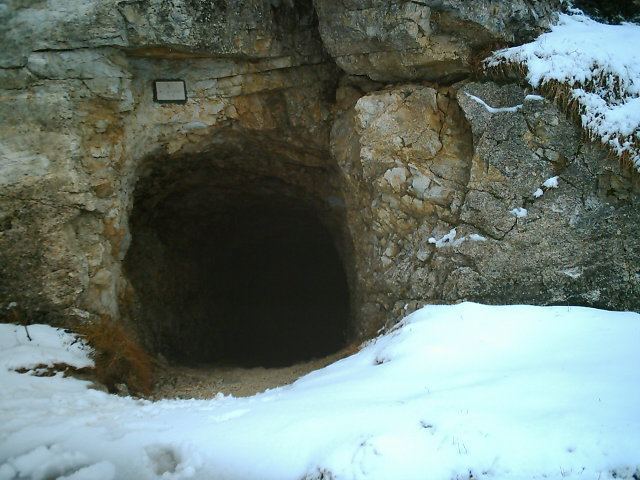 | ||
The mines on the Italian Front during the First World War comprised a series of underground explosive charges of varying sizes, secretly planted between 1916 and 1918 by Austro-Hungarian and Italian tunneling units beneath their enemy's lines along the Italian Front in the Dolomite section of the Alps.
Contents
Background
From 1915, the high peaks of the Dolomites range were an area of fierce mountain warfare. In order to protect their soldiers from enemy fire and the hostile alpine environment, both Austro-Hungarian and Italian military engineers constructed fighting tunnels which offered a degree of cover and allowed better logistics support. In addition to building underground shelters and covered supply routes for their soldiers (like the Italian Strada delle 52 Gallerie), both sides also attempted to break the stalemate of trench warfare by tunneling under no man's land and laying large quantities of explosives beneath the enemy's positions.
Between 1 January 1916 and 13 March 1918, a total of 34 mines was detonated in this theatre of war. Of these, 20 were Italian mines aimed at Austro-Hungarian targets and 14 were Austro-Hungarian mines aimed at Italian targets. The size of the explosive charges ranged from 110 kilograms (240 lb) to 50,000 kilograms (110,000 lb) of blasting gelatin. The largest Italian mine held 35,000 kilograms (77,000 lb) of explosive.
Focal points of the underground fighting during the War in the Dolomites were Pasubio with 10 mines, Lagazuoi with 5, Col di Lana/Monte Sief also with 5, and Marmolada with 4 mines. The most intense episode was the seven-week period from 16 September to 3 November 1917 which saw 12 mine explosions. After November 1917 and the Italian retreat to Monte Grappa and the Piave river in the aftermath of the Battle of Caporetto, Pasubio with its elevation of 2,239 metres (2,449 yd) remained the only underground war area on the Austro-Italian front.
Unlike the mining efforts on the Western Front, where e.g. the mines on the first day of the Somme (1916) were constructed in a chalk and flint area and where e.g. the mines in the Battle of Messines (1917) were constructed in geology dominated by wet sand and clay, the mine galleries on the Austro-Italian front had to be executed at high altitudes in the hard carbonate rock of the Dolomites using hand-operating drilling machines and chisels. Fighting under these conditions, often in exposed areas near mountain peaks and even in glacial ice, required extreme skill of both Austro-Hungarian and Italian miners.
Popular culture
The Austro-Hungarian and Italian mining efforts in the high mountain peaks of the Italian Front were portrayed in fiction in Luis Trenker's film Mountains on Fire of 1931.
